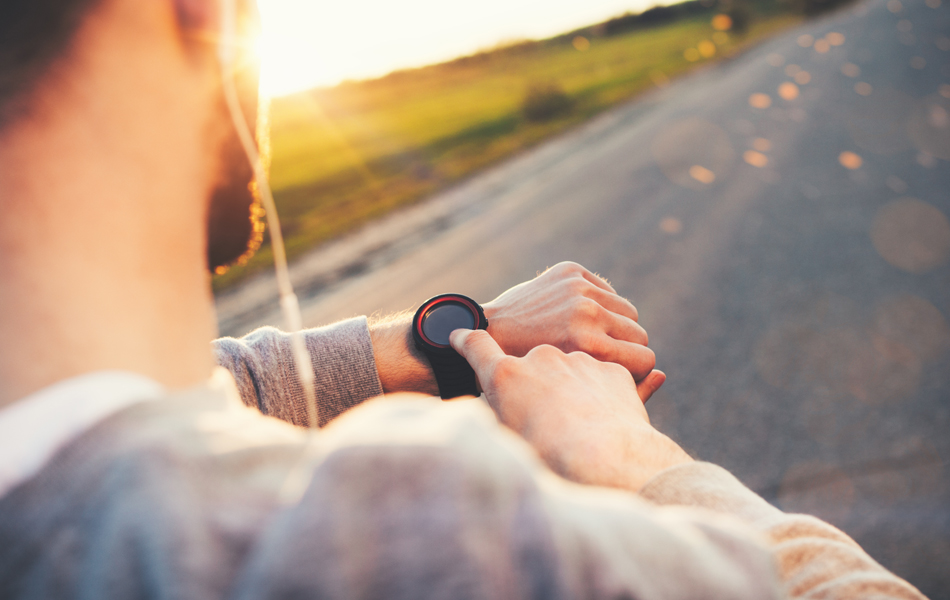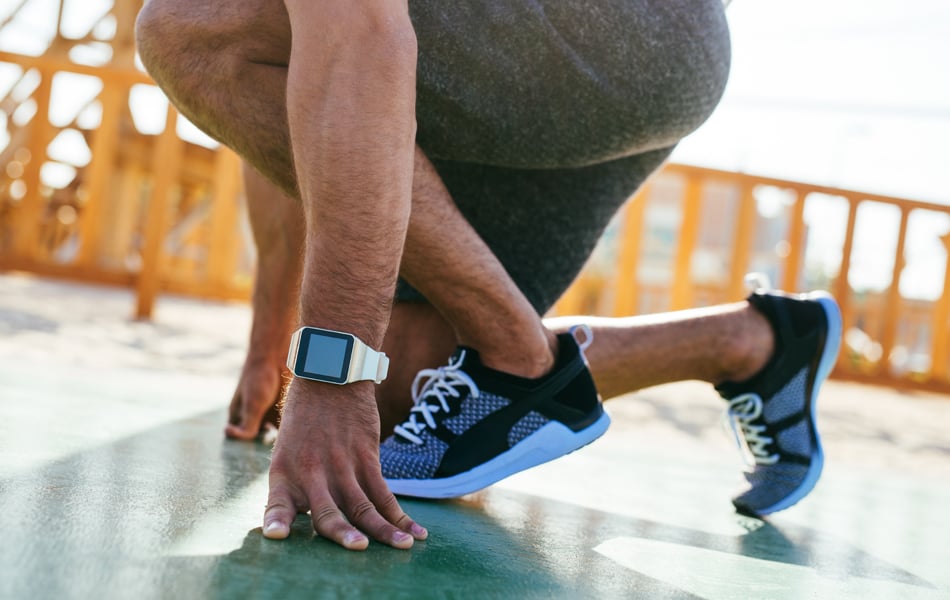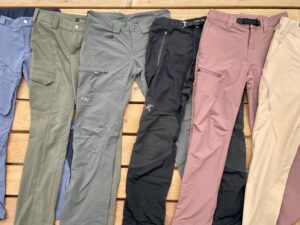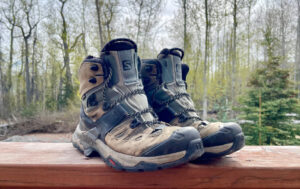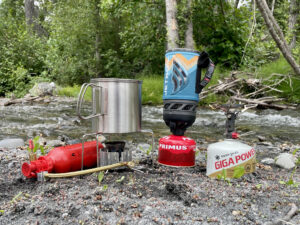Quantifying your running workout with the specific metrics offered on the best running watches and running smartwatches can be the difference between over and undertraining. This data can aid in mitigating injuries, setting and meeting goals, finding community, and getting the most out of your workout.
Sporting larger displays and running-specific sensors, plus Bluetooth connectivity to double as a daily smartwatch, modern running watches bear little resemblance to the original Timex Ironmans of the past.
We went running with a few of the best running GPS watches on the market to test the accuracy, sample the metrics, and determine the ease of use. Keep pace and check out the results for the best running watches of 2022.
Best overall running watch: Garmin Forerunner 45S

- Health monitoring
- Smart features and connectivity
- Safety and tracking features
- Activity tracking
- Running-specific metrics
- Training and analysis features
The Garmin Forerunner 45S is light, small, and rocked the line between offering too much or too little information. This Garmin has been a loyal partner on the trail and pavement for two years. The combined GPS, Galileo, and Glonass sensors followed me at every turn, and I could see directly on the Garmin Connect IQ app where I had been, along with my mile splits, distance, steps, calories, intensity minutes, HR zones, speed, VO2 max, cadence, and more.
The 39mm watch face and soft silicone band weigh a verified 32g, and the lens is a chemically strengthened glass; after consistent beatings, my 45S is still holding strong. Beneath the lens is a high-resolution color transflective display visible even in the harshest of Texas midday light. Control was easy with the five buttons surrounding the watch face, but some buttons were dual-function. These did require referencing the manual but became intuitive quickly. In GPS mode, the watch is claimed to 13 hours or 7 days without the GPS engaged.
I trained for a few races using the 45S, using the Garmin Coach feature and found it effective, especially given that it is included with a running watch at this MSRP. I also programmed my own workouts into the watch, which was easy through the Garmin Connect app. The 45S also has cycling, cardio and yoga settings for cross-training days and a 5 ATM water-resistance rating for days in the pool.
The interface was easy to read, see and control using five buttons around the watch face. Some of the buttons have dual purposes and required reading the manual to master but became intuitive. I set multiple daily and weekly alarms and often used the snooze feature. Read the in-depth review here.
See the Garmin Forerunner 45S on Garmin
See the Garmin Forerunner 45S on Amazon
See the Garmin Forerunner 45S on Walmart
Best budget running watch: Garmin Forerunner 35

- Wrist-based HR monitor
- GPS sensor
- Distance, time, pace, and cadence metrics
- Smart connectivity
- Live tracking
- 24/7 activity tracking
- Weight: 1.6 ounces
The Garmin Forerunner 35 offers similar features to its sibling, the 45S but does not sport a color display or a digital dial-like interface; it’s a little bulkier and was less intuitive to use.
The square display has bold black digits, which kept the stats easily visible. The Garmin Forerunner 35 captured heart rate and, in turn, sleep and stress through the wrist-based heart rate monitor. Daily summaries of activity and health were available on the Connect app, along with workout summaries. Breakdowns of intervals, pace, distance, heart rate fluctuations, and more were at my disposal via the HR and GPS sensors.
Smart connectivity through Bluetooth allowed notifications to alert me through the watch and allowed automatic syncs to the Garmin Connect app.
The battery life is claimed to last up to 9 days in smartwatch mode or 13 hours in GPS mode. It has a 5 ATM water rating plus bike and swim activity profiles to continue tracking cross-training days. Read the in-depth review here.
See the Garmin Forerunner 35 on Amazon
See the Garmin Forerunner 35 on Garmin
Most versatile running watch: Garmin Instinct

- 14-day battery life: 16 hours in GPS mode
- Running specific metrics
- Eight live sensors, including an altimeter and compass
- Cycling and swimming activity profiles
- Outdoor recreation profiles
- 128×128 pixel monochrome resolution
- Sunlight-visible
Adrenaline junkies flock to the Garmin Instinct for its impressive selection of activities it can monitor –- gym workouts, running, hiking, climbing, mountain biking, snow and water sports. The accurate tracking abilities, extensive battery life, and price make the Instinct a budget-friendly trail running option.
Combined GPS, Glonass, Galileo sensors offer pin-point location on local trails or remote trails. The accelerometer, thermometer, altimeter, compass, and wrist heart rate monitor extensively track your movement and heart rate.
Bluetooth connection offers wrist notifications, music control, and other smart features. The Instinct supports live tracking but doesn’t offer the same emergency services as other Garmin models. Training, planning, and analyzing for your ultras will be smooth with Instinct’s extensive heart-rate information. But it lacks the boat-load of running specific metrics and training features found in other Garmin running products.
When race day approaches, the 16-hour GPS mode battery life ensures you’re not alone during your final miles. The monochromatic, transflective MIP screen helps conserve battery power. Those with a penchant for suffering longer than 16-hours should consider the Instinct Solar for even greater battery life while using GPS.
The durable fiber-reinforced case and bezel, chemically hardened glass, and silicone band don’t turn heads. Still, they will last years, and it’s rated for 10 ATMs in water resistance for aquatic adventuring.
See the Garmin Instinct on Garmin
See the Garmin Instinct on Amazon
See the Garmin Instinct on Walmart
Best for ultra running: Suunto 9 GPS Running Watch

- Intelligent battery modes
- Wrist-based heart rate and health metrics
- Sleep and stress tracking with activity recovery time
- GPS sensor with additional supplementary satellite sensors
- 100M water resistant
- Complimentary Suunto App
- Smart connectivity
The Suunto 9 GPS Watch is the ultrarunner’s dream. Four different battery settings (performance, endurance, tour, or ultra) deliver a 25-hour to 170-hour battery life while in GPS mode! This eclipses many other GPS-enabled watches. The fitness watch can switch between modes instantly and estimates the remaining battery life on the fly. The FuseTrack technology assists the GPS to lower the battery usage without compromising accuracy.
Other stand-out features include five different satellite sensors for accurate location and pace data, rest and recovery notifications, GPS heat maps, and a GPS-based altimeter. The watch has a stainless steel bezel and a mineral glass face, combined with the fiber-reinforced polyamide case and a silicone band.
Suunto claims a total weight of 72g; however, the 9 is an above-average-sized watch, and the 2-inch case will stand out on any wrist, male or female, which is somewhat mitigated by the 320 x 300 display. And while it’s not exactly cheap GPS running watch, it is one of the best ever to hit the market.
Best for casual runners: Timex Ironman Classic 50 Move+

- Budget-friendly
- Sportwatch and interval modes
- Distance and activity tracker with Bluetooth connection
- 100m water resistant
- Indiglo night-light
- Timex Connected App
- Alarms and notifications
- Coin cell battery
Timex watches are barebones, usually only having a stopwatch and timer, single or dual alarms, an Indiglo backlight, and split laps. The Timex Ironman Classic 50 Move+ is your tried and true Timex running watch with a Bluetooth connection.
It’s not everyone’s bread and butter to analyze a run; running based on how you feel rather than your watch metrics show can thwart off injury and maintain your motivation. But for those who want analysis, the Bluetooth connectivity allows live tracking of distance traveled, daily steps, and burned calories. The Timex connected app also can control and set alarms, intervals, and timers.
Timex has been making wrist-based stopwatches with quartz analog movement for years, helping them remain budget-friendly. The Classic 50 Move+ is digital; it almost doubles the typical Timex price tag, but it’s still an affordable option.
See the Timex Ironman Classic 50 Move+ on Amazon
Best smart watch for running: Apple Watch 5

- GPS/Galileo/Glonass sensors
- Battery-life: max 18 hours
- Activity and health tracking
- Barometric altimeter
- 50m water resistant
- Running specific analysis and specs
- Download workouts
The Apple Watch Series 5 isn’t the latest model of the infamous Apple Watch, but it’s one of the best smartwatches for running. It has GPS, a compass, a wrist-based optical heart rate sensor, and a barometric altimeter. The barometric altimeter is what sets the Series 5 apart from the bushel of apples. Incident detection and emergency SOS means pushing further comes with less worry. The activity tracking is extensive on the watch and even more extensive on the supplementary Health app.
The watch face is 40mm or 44mm with an aluminum case attached to a soft sports band, and the sleek package yields a max battery life of 18 hours. Apple smart features precede over watches’ running features; it is a smartwatch that works well for running. A Series 5 SiP with 640bit dual-core processor, a W3 wireless chip, and a built-in mic keeps you connected to work, the news, and your social life while on the run. The customizable watch face and touch screen deliver personality and familiar control for those with iPhones.
See the Apple Watch 5 on Walmart
See the Apple Watch 5 on Amazon
Best running-specific metrics: POLAR Vantage V2

- Training metrics and planning
- Recovery metrics and analyzing
- 40 hour GPS battery life: 7-day watch mode battery life
- 100m water resistant
- GPS and Barometric altimeter
- Bluetooth connectivity, external sensor connectivity
- Wrist-based heart rate monitor
- 130+ sport profiles
The running metrics available to Polar Vantage V2 users can be overwhelming. Regardless of your data requirements, you will be ready for the training months ahead. Polar has equipped the Vantage V2 with a huge arsenal of tools to help ensure a successful race day.
Running performance tests and VO2max estimates on the watch mark progress and performance, while Running Power and Hill Splitter features allow modern training methodologies. The FuelWise feature ensures you’re adequately fueling during the long runs, while the Energy Sources function estimates your fat, carb, and protein usage.
Training Load Pro, Leg Recovery Test, Sleep Plus Stages, Nightly Recharge help maintain overall wellness throughout training. Polar offers a personalized FitSpark training program; using the metrics from the recovery features, FitSpark offers daily workout suggestions based on your performance history and recovery.
The V2 is compatible with Strava and has free running programs of its own. The GPS and additional satellite information combined with the 240 x 240 resolution display and uploaded routes from Komoot gives crystal clear turn-by-turn route guidance.
See the POLAR Vantage V2 on Amazon
See the POLAR Vantage V2 on Walmart
Best for backcountry terrain: Garmin Fenix 6

- Multi-GNSS
- Wrist-based heart rate and pulse OX2 sensors
- Training programs and personalized suggested workouts
- 36 hour-48 day battery life, dependent on features
- 10 ATM
- Sleep, hydration, relaxation tracking
- ABC sensors
- Smart connectivity
- Incident detection and live tracking
Pulling the trigger on a Garmin Fenix 6 will shoot a hole in your bank account but fill the void on your wrist while ultra-running if you fully utilize its potential. Armed with multi-GNSS, location-tracking in backcountry environments will be more accurate than an individual GPS sensor. ABC, or altimeter, barometer, and compass, are great additions for trail running in remote or mountainous areas.
The ClimbPro feature is an ascent planner. I usually stick with the mantra, “crest and don’t rest, ” when tackling rolling hills or endless ascents, which is probably not the best. Having the Fenix 6 update real-time information about the gradient, distance to the top, and elevation gain, will keep you on your toes and pushing through.
With ultra-running, incident and safety features offer a vital lifeline in potentially remote environments, and your watch must have enough juice to help contact someone. The power manager breaks down where you’re draining the battery, and in the expedition mode, a low-powered GPS mode can last up to four weeks.
See the Garmin Fenix 6 on Amazon
Best watch for beginning runners: Suunto 3
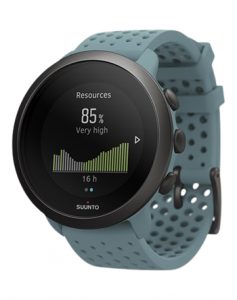
- GPS sensor
- Wrist-based heart rate monitor
- Adaptive 3-tier training programs
- 30m water resistant
- Smart connectivity
- Basic running-specific metrics
Suunto’s base tier watch is the Suunto 3; it’s still an excellent watch (aesthetically and technically) and easily one of the best running watches for beginners. The watch has three training modes: maintain, moderate improvement, and boost your fitness. Suggested week-long training programs are on the Suunto 3 and adapt if you skip a day or go hard in the paint.
Swimming (30m water resistance), biking, yoga, and other activity options are available if you’re not diving heads over heels into running just yet. GPS and the wrist-based heart rate monitor offer the typical metrics: heart rate, zones, pace, distance, laps, stress, and a sleep tracker. The lack of ABC sensors, additional GNSS sensors, and in-depth health and training metrics keep the price low and the weight down.
Best lightweight: Coros Pace 2

- GPS and Glonass sensors
- wrist-based heart rate monitor
- 30 hour-20 day battery life, feature usage dependent
- Heat muscle maps
- 24/7 activity tracking
- 50m water resistance
A lightweight watch will outshine the extensive running metrics or heavy training features for certain types of runners. Backcountry environments and slow, long courses make a good battleground for high-tech running watches. Road racers and speedsters may prefer a lightweight running watch like the Coros Pace 2, which weighs a claimed 29gm complete with a comfortable nylon strap.
Features include:
- Heart rate and sleep tracking
- Calories burned
- Heart rate zones
- Smart connectivity and training programs
- Analysis on the supplemental Coros app
The body heat maps set the Coros Pace 2 apart. After a workout, the heat maps show daily, weekly and monthly usage of muscle groups and where your training could be lacking.
It has 50m water resistance, and the claimed battery life in standard watch mode is 20 days. In full GPS mode, it lasts a claimed 30 hours and 60 hours in UltraMax mode.
Why trust us & how we tested
It’s a rare occasion I run without a watch; my running watch rarely leaves my wrist. The constant companionship allowed us to get to know each other deeply.
The watches I’ve tested know my basic vitals, stress levels, hydration level, feminine cycle and activity level. Data isn’t the only thing; they know my goals, triumphs, and failures through running and training program features.
In turn, I know my watches. They’ve been with me over my most brutal miles: trail or road, long or short, high or low, training or leisure.
Who this is for & how we picked
We considered all manners of runners when evaluating the best running watches. Every runner has different goals: general fitness to crushing personal records to competitive marathoning. We chose running watches to reflect the broad spectrum of runners hitting the trails and pavement while considering everyone’s budget.
Features to look for in running watches
Built-in GPS
A huge advantage of running watches is the GPS feature. Every GPS running watch has a GPS receiver—and potentially other GNSS receivers. When engaged and the receiver receives signals from at least four GPS satellites, the watch can figure out your exact location using the distance between you and the four satellites.
Tracking distance, mile splits, elevation changes, and pace (and more) using GPS provides a vast amount of information to analyze alongside the heart rate metrics.
GNSS is the Global Navigational Satellite Systems and refers to the Galileo and Glonass navigational systems. If you’re consistently running on trails or backcountry terrain, a multi-GNSS system is more suited to those environments than standard GPS alone.
Run-specific metrics analysis
Pace, calories, mile splits, distance traveled, and heart rate are all popular metrics most running watches will have. The nitty-gritty, though, like cadence, stride length, HR zone, weekly mileage, efficiency, flight time, and step rate, all are available in the higher-end running watches. Like Garmin’s Connect IQ, complementary apps offer even more insight once the data sync from the day’s run.
Training programs assessment
The running watches in this guide all have some manner of a training program—except the Timex for the casual runner—and potentially assessments or fitness levels tests to track your progress towards your running goals. Apps that supplement and connect to the running watch have training programs, or runners can input their plans and upload them to the watch.
Higher-end watches personalize workouts based on running metrics and recovery feedback or have built-in coaching services for motivation. Depending on the running watch model, runners can control the training program from the watch itself or a smartphone app.
Weight
Running watches can weigh anywhere between 20g to 85+g, and it’ll depend on features and the case, bezel, and strap materials. Running watches durable for rugged terrains, like the Garmin Fenix 6 or Suunto 9, soar above average weight; the runners typically wearing the mentioned GPS running watches may train in more rugged and remote terrain compared to the average fitness runner. Nylon straps and polymer cases will make for the lightest running watches, great for road races, but they aren’t as durable as heavier models that utilize more metal.
Water rating
Cross-training is crucial to keep your legs healthy as a runner; substituting a swim or bike one or two days a week helps avoid repetitive pounding on the body, especially your lower legs. A waterproof running watch will allow you to continue tracking your training in the water.
Most running watches will have an IP or ATM rating. ATM ratings focus more on pressure and depths over 10 meters. Look out for at least a 5 ATM rating if you plan on swimming for cross-training. A watch with a 3 ATM rating will protect the watch from cooling off in the pool after a run but not an extensive swimming workout.
IP ratings define waterproof versus water-resistant. An IPX6 rating will suffice for showering and a rainy run; an IPX7 covers heavy rainfall.
Battery life
Modern features and uninterrupted sensors on the best running watches kill the battery life, lasting only days, compared to the months-long battery life of their predecessors. The battery life of a running watch now is variable, depending on the use of certain features.
For example, the battery life may only be nine hours if the GPS is on the entire time. For ultra-runners, nine hours is not enough. But for the average Joe or Joan, nine hours of battery life will last a whole week. The battery life while using the features you’re purchasing the watch for is an important consideration.
Display resolution
Rain, snow, or mud, some runners are movin’ and groovin’ through it all. Looking down at your wrist for more than a brief second is a risky move in those conditions. High-resolution displays make the glances worthwhile instead of trying to squint at your wrist while remaining steady on your feet.
Heart rate monitor
Most GPS running watches will also have a built-in wrist-based heart rate monitor. Wrist-based heart monitors measure heart rate using light and the changes in the blood volume per heartbeat. Chest strap-style heart rate monitors use electrodes to track heart rate, eliminating any chance of disruptions caused by rouge light waves or watch movement.
Running watch FAQ
Q: What is a running watch?
A: A running watch is a tool used by runners to track numerous measurements. The extent of those measures depends on the running watch and the preferences of the runner.
Features can include GPS, altimeter, barometer, calendar, alarm, stopwatch, timer, heart rate, HR zone, VO2max, smart features, and more. Running watches generally have complementary apps to download information and activity history to provide even more detailed specs and vitals.
Some running watches may have too nuanced of information for the casual runner. And basic models won’t offer enough information and features sought after by avid marathoners and trail runners.
Q: Are running watches worth it?
A: At one point in my running career, I only needed a $20 wrist stopwatch from Target. I would calculate my distances on mapmyrun.com then divide for my mile splits using pen and paper. But once I invested in a running watch and had all the information — splits, HR, cadence, GPS — I never returned to my pen and paper ways during my run.
So, it’s up to the runner, really, if it’s worth it. I can’t tell you that a $200 running watch will be worth it; I don’t know if you’d use the information or take advantage of the features. If you run just for physical activity and not for the races or community or chasing the runner’s high, an investment in a running watch may not be worth it.
Q: Do running watches play music?
A: The most basic running watch models might not have music capabilities, but most choices today are running watches with music. If the running watch supports a continuous Bluetooth connection between the watch and a phone during a run, runners can control their music from the watch.
If the watch supports syncing music before the run, you won’t have to carry your phone. Manufacturers will state the musical features in the specifications, so be sure to look at the extent of playing music and whether or not you’ll need to carry your phone. If you’re looking for a running watch with music, we recommend seeking out this feature in particular.
Q: What does GPS do on a smartwatch?
A: The most basic function of GPS is distance tracking. Pace and mile splits are all calculated using the GPS and timer functions. In Garmin running watches, the GPS also plays a role in the safety features: marking the location and sending it to emergency services or designated emergency contacts.
Q: Can I run with my Apple watch without my phone?
A: Yes, you can, but with limitations. If you’d like to use your cellular connection while running, you’ll need to include the Apple Watch in your phone plan. Otherwise, playlists and podcasts can be downloaded or synced to the watch ahead of time so you can leave your phone at home.
Q: What watches do pro runners wear?
A: A loaded question to ask given there are various classes of pro-runners. The trail to race and speedsters to endurance crazed nuts: a running watch serves each runner differently. Still, a study done of the 2019 Western States Sub 24 Finishers shows that Garmin and Suunto were the preferred brands, each accounting for over 40% of sub-24-hour finishers.
Just about any serious runner today will have a running watch with heart rate monitoring at the very least.
Sources:
- How Accurate Are Fitness Tracker Heart Rate Monitors? – Live Science
- How Does GPS Work? – NASA Science Space Place
- 2019 Runner Survey Results – Western States 100-Mile Endurance Run

